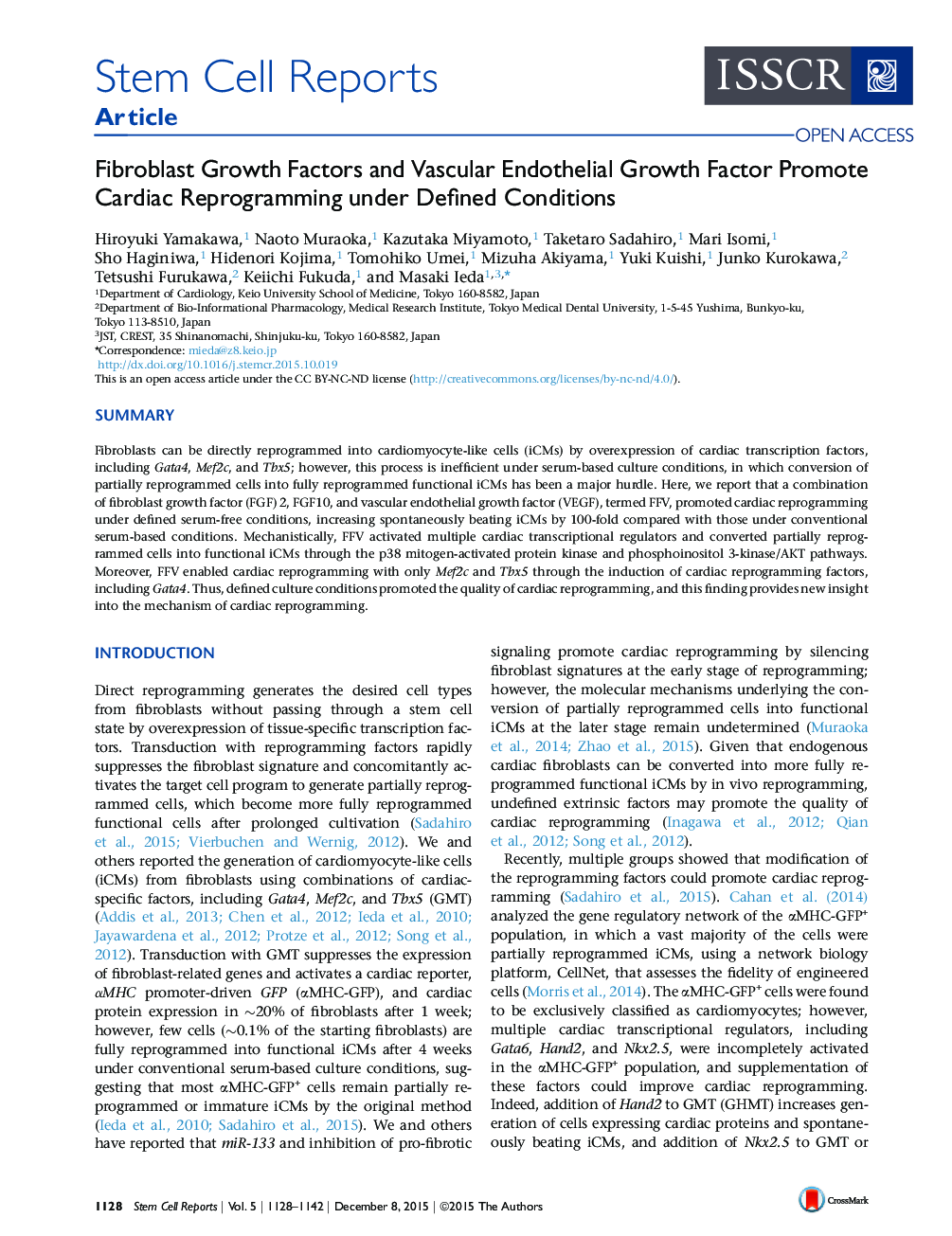| Article ID | Journal | Published Year | Pages | File Type |
|---|---|---|---|---|
| 2093713 | Stem Cell Reports | 2015 | 15 Pages |
•FGF2, FGF10, and VEGF (FFV) promote cardiac reprogramming under defined conditions•FFV induces cardiac reprogramming factors through the p38MAPK and PI3K/AKT pathways•FFV converts partially reprogrammed iCMs into fully reprogrammed functional iCMs•FFV reduces genetic manipulations required for cardiac reprogramming
SummaryFibroblasts can be directly reprogrammed into cardiomyocyte-like cells (iCMs) by overexpression of cardiac transcription factors, including Gata4, Mef2c, and Tbx5; however, this process is inefficient under serum-based culture conditions, in which conversion of partially reprogrammed cells into fully reprogrammed functional iCMs has been a major hurdle. Here, we report that a combination of fibroblast growth factor (FGF) 2, FGF10, and vascular endothelial growth factor (VEGF), termed FFV, promoted cardiac reprogramming under defined serum-free conditions, increasing spontaneously beating iCMs by 100-fold compared with those under conventional serum-based conditions. Mechanistically, FFV activated multiple cardiac transcriptional regulators and converted partially reprogrammed cells into functional iCMs through the p38 mitogen-activated protein kinase and phosphoinositol 3-kinase/AKT pathways. Moreover, FFV enabled cardiac reprogramming with only Mef2c and Tbx5 through the induction of cardiac reprogramming factors, including Gata4. Thus, defined culture conditions promoted the quality of cardiac reprogramming, and this finding provides new insight into the mechanism of cardiac reprogramming.
Graphical AbstractFigure optionsDownload full-size imageDownload as PowerPoint slide
